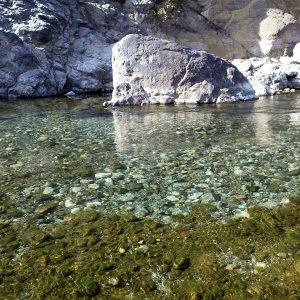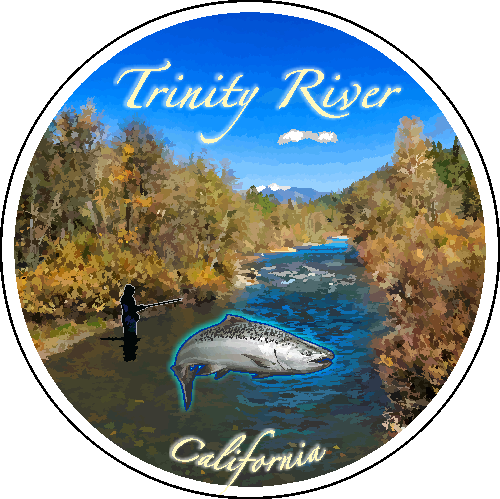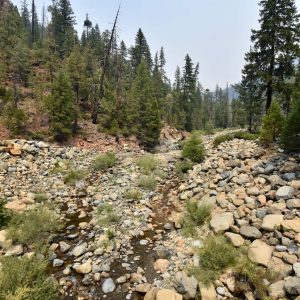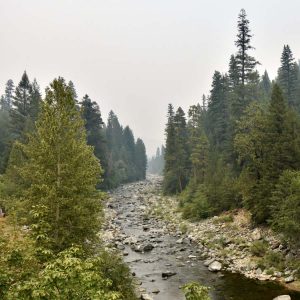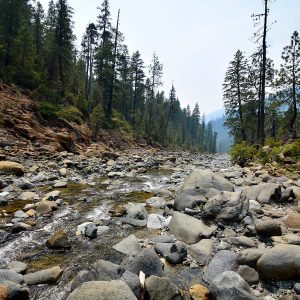Voices Of The River
Regardless of how you recreate, it is vital we all take care of these natural places. Practicing environmental stewardship, and encouraging others to do the same, will keep the Trinity River watershed healthy and safe for flora and fauna, as well as other people!
Important stewardship practices to follow: Dispose of waste properly – whether it is trash or human waste! If you see trash in or near the water and you can safely dispose of it, do so.
Respect wildlife – do not feed or disturb wild animals Be careful with fire – always practice proper fire safety to reduce the risk of wildfire Know before you go – Before you recreate, make sure you know the relevant information including river flows, weather forecasts, and road conditions. Don’t get caught in a situation you aren’t prepared for!
For more Leave No Trace guidelines, visit https://lnt.org/why/7-principles/
Blog
August
The Trinity River is a recreational paradise whether you like to be on the river or in the mountains. How will you choose to explore the Trinity River watershed?
Hiking & Backpacking
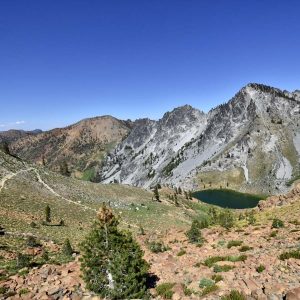
The Trinity River and many of its tributaries begin in the Trinity Alps and Scott Mountains that span across northern Trinity County. There are over 600 miles of trails in the Trinity Alps Wilderness, the second largest wilderness area in the state. The mountains feature dramatic peaks, refreshing alpine lakes, colorful meadows, and crystal clear creeks. If you plan on backpacking in the wilderness area, you will need to obtain a wilderness permit at the Weaverville Ranger Station (360 Main St) or Fire Stations (Mule Creek & Coffee Creek off Hwy 3 AND Junction City & Big Bar off Hwy 299). If you plan on having a campfire, you will need to obtain a campfire permit at one of the above locations, or at
Fishing
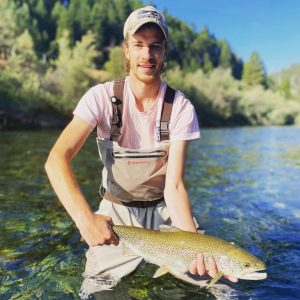
The Trinity River is legendary for its salmon and steelhead fishing by drift boat or at wade-in riverside spots. There is also a world class fly-fishing area from below Lewiston Dam to the Old Lewiston Bridge. Steelhead are the most sought-after sportfish on the Trinity, closely followed by chinook salmon. Brown trout are non-native to the watershed but were heavily stocked until the late 1970s and are still fished for today. There are many developed and undeveloped public access points along the river corridor to launch a boat, fish from the shore, or simply go for a refreshing swim! Visit the California Department of Fish and Wildlife website for up-to-date fishing regulations.
Boating
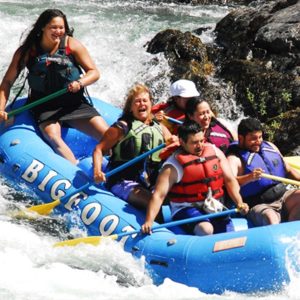
Rafting on the Trinity River can range from a relaxing float to an exhilarating whitewater experience. The most extreme stretch of river is the Burnt Ranch Gorge, featuring Class IV and V rapids. Whether you are drifting through the calm pools, or navigating difficult rapids, a day on the water is bound to give you a new perspective of the river and introduce you to some of the Trinity River’s diverse wildlife! There are many local rafting companies along the Trinity River including: Trinity River Rafting, Six Rivers Rafting, Bigfoot Rafting, Redwoods and Rivers Rafting, and Old Bridge Rafting & Guide Service.
Rafting companies:
September
The State of Water in the Trinity River Watershed
Trinity County is in a severe drought and the effects on our water resources are drastic. Streams across the Trinity River watershed are dangerously low. Tributaries that have decades of flow data recorded, including Coffee Creek, Indian Creek, and Rush Creek, are fast-approaching or well under the 2014 record lows. The South Fork Trinity River flow is at 30% of the average for this time of year.
See real time flow information at: https://dashboard.waterdata.usgs.gov/app/nwd/region=lower48&aoi=default
The severe drought we are in has both short and long-term impacts. In the short term, households run out of water, creeks go dry that normally would flow all year, fish and wildlife face increased disease and habitat loss, and wildfires rage across our forests. The long-term impacts compound with each additional drought year. In particular groundwater resources continue to be depleted without the proper replenishment. This means it will take increasingly more water to recharge our groundwater storage, and by extension, restore adequate water to our streams and springs.
Did you know...
Did you know Trinity and Lewiston Dams actually keep the Trinity River flows higher and colder in the summer than they normally would be? Before any dams were built on the Trinity River, natural instantaneous streamflow in Lewiston ranged from as low as 30 cubic feet per second (cfs) to as high as 70,000 cfs. Now, river flows are held between 150 and 300 cfs most of the year, which is artificially higher in the summer and lower in the winter. This means in drought years like what we are experiencing now, the main stem Trinity River remains more habitable for fish than many naturally fed tributaries.
What can you do to reduce your water usage?
No matter what water source you use, everyone can help conserve water and protect our water resources. Household water saving tips:
• Turn off faucets and avoid leaving water running when brushing your teeth or washing dishes.
• Only use automatic dishwashers or washing machines for full loads.
• Water your lawn only when it needs it, and long enough for the water to seep down into the roots.
• Water your lawn and plants during the coolest parts of the day
• Put mulch or groundcover around plants to hold moisture in the soil
• Collect the water that you let run from the faucet until the temperature is right and use that to water plants.
Ways to protect our natural water resources:
• Avoid the use of fertilizer or pesticides
• Pick up and properly dispose of dog waste and trash
• Properly dispose of human waste (see https://lnt.org/why/7-principles/dispose-of-waste-properly/)
• Avoid constructing swimmer’s dams in streams
• Leave vegetation along the stream riparian
October
During fall, the river bottom is transformed into a safe haven for millions of eggs as they incubate in their rocky nests for several months. Yes, we are talking about salmon eggs! Chinook salmon spawn in the fall, building their redds and laying the eggs of future Trinity River salmon runs. A redd is a nest of rocks built by spawning salmon to protect their eggs. As you recreate on the river, it is vital to know what to look for and how to avoid disturbing the delicate redds that are keeping our future salmon safe.
A redd is generally constructed out of gravel-sized rocks, about the size of your fist or smaller, though different fish will construct redds out of varying sized rocks. Salmon use their tail to kick up rocks, creating a pit in the streambed and allowing the current to deposit the displaced rock in a pile just downstream. The eggs are hidden in this pile, protected by the gravel.
Redds are usually 1-2 meters in diameter and roughly rounded. As the salmon build their redds, they inadvertently clean the algae off of the rocks. Look for lighter-colored, algae-free gravel surrounded by darker gravels.
